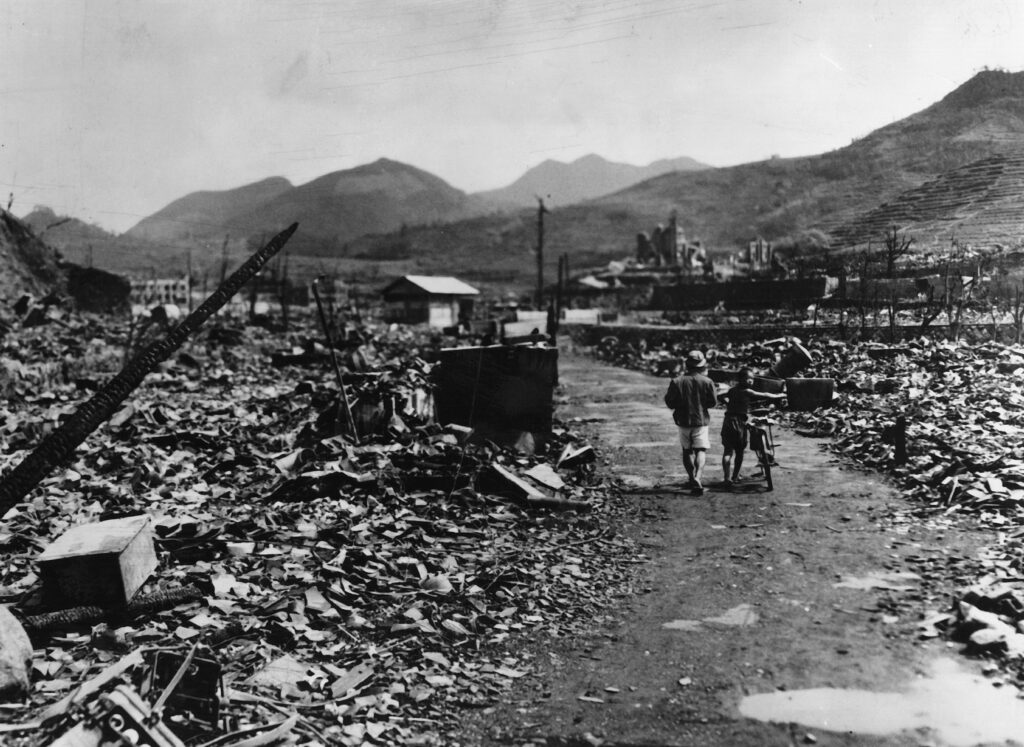The Atomic Bombing of Nagasaki: Reflection on August 9, 1945
Introduction
On the ninth day of August in 1945, an occasion of enormous historical significance unfolded. The Second World War was approaching its conclusion, and there was mounting pressure amongst world leaders to bring an end to the hostilities. However, few could have anticipated the sheer level of devastation that would occur on this fateful day in history when the second atomic bomb ever to be deployed in warfare was dropped on the Japanese city of Nagasaki.
The Event
On August 9, 1945, at approximately 11:02 a.m. local time, the American B-29 bomber, ‘Bockscar’, released “Fat Man,” a plutonium implosion-type bomb over Nagasaki. This followed the ‘Little Boy’ bomb drop over Hiroshima three days prior, marking a pivotal turning point in the war. Approximately 40,000 people were instantly killed in Nagasaki, however, the final death toll is estimated to be between 70,000 to 75,000 due to radiation sickness and injuries.

Despite the overwhelming destruction, the bombing marked the beginning of the end of World War II. Six days later, on August 15, Japan announced its surrender, effectively ending the largest, deadliest conflict in human history.
Interesting Facts (Suitable for Kids)
1. The ‘Bockscar,’ piloted by Major Charles W. Sweeney, was a silverplate B-29 bomber aircraft. Silverplate was the code reference for the U.S. Army Air Force participation in the Manhattan Project, which developed the atomic bomb.
2. Nagasaki was not the original target for the second bomb. The primary target was Kokura, but due to poor visibility caused by cloud cover, the bomber was redirected to Nagasaki.
3. The bomb, aptly named “Fat Man,” was about 10.6 feet (3.25 meters) long and weighed nearly 10,000 pounds.
Educational Activities (For Kids)
1. ‘Atomic Bomb Diary’ writing: Encourage your kids to write a diary from the perspective of Major Charles Sweeney, documenting his thoughts and feelings before, during, and after the mission.
2. Model making: Create a model of the ‘Bockscar.’ Discuss its structure, purpose and its role in the history.
3. Discussions: Teachers can start a discussion about the ramifications of warfare. This will help students to understand the effects of war and promote peace.
Conclusion
The bombing of Nagasaki on August 9, 1945, was an event of profound historical significance. Although the act carried a significant human cost and brought extensive suffering, it indirectly accelerated the end of World War II. This day serves as a sterling reminder of the horrors of warfare, urging modern-day societies to work tirelessly towards maintaining and championing peace.
References
1. “The Atomic Bombing of Nagasaki”, The Manhattan Project: An Interactive History, U.S. Department of Energy.
2. “Nagasaki | Facts, History & Atomic Bomb.” Encyclopedia Britannica.
3. “Bombings of Hiroshima and Nagasaki – 1945 | Atomic Heritage Foundation.” Atomic Heritage Foundation.







Jean Hull Herman
November 4, 2023 / at 7:48 pm
Hello. My name is Jean Hull Herman.
People, I love this site! I’m just sad to have missed so many wonderfully important information sites. However, I’ll keep on reading. Things I have on my Bucket List (a truly off-putting name, yes?) Live in the Smithsonian Museum for a week, food and bed supplied, and the Louvre Museum in Paris. I have been to the main museums of Egypt in Cairo, and the British Museums in London.
I may be all right with pictorial self-tours, because I’m 79 and bound to a wheelchair, but my body and soul would be happy to see the Smithsonian again.
If you are looking me up, I did have three books published: two poetry books, Starving For the Marvelous and Jerry Springer as Bulfinch; and When I’m Calling You, to give the stories of Jeanette Macdonald and Nelson Eddy, with a happy ending together.
Bye now.